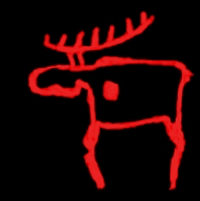
Back Soome muinasusund Estonian Suomalainen muinaisusko Finnish Religion finnoise antique French Finn vallás Hungarian Paganisme Finnik ID Finni ansieni kredo NOV Baltiekkusuomelaine Paganallizus OLO Paganismo finlandês Portuguese Традиционные верования финнов Russian Finnish paganism SIMPLE
This article needs additional citations for verification. (January 2009) |

Baltic Finnic paganism, or Baltic Finnic polytheism was the indigenous religion of the various of the Baltic Finnic peoples, specifically the Finns, Estonians, Võros, Setos, Karelians, Veps, Izhorians, Votes and Livonians, prior to Christianisation.[1][2] It was a polytheistic religion, worshipping a number of different deities.[3] The chief deity was the god of thunder and the sky, Ukko; other important deities included Jumala, Ahti, and Tapio.[3] Jumala was a sky god; today, the word "Jumala" refers to a monotheistic God. Ahti was a god of the sea, waters and fish. Tapio was the god of the forest and hunting.
Baltic Finnic paganism included necrolatry (worship of the dead) and shamanism (tietäjä(t), literally "one who knows"), and the religion was not always uniform across the areas it was practiced, as customs and beliefs varied during different periods of time and regions.[4][5] Baltic Finnic paganism shares some features with its neighbouring Baltic, Norse and Germanic pagan beliefs.
The organic tradition was sidelined due to Christianisation starting from ca. 12th century and finally broken by the early 20th century, when folk Magic and oral traditions went extinct. Baltic Finnic paganism provided the inspiration for a contemporary pagan movement Suomenusko (Finnish: Belief of Finland), which is an attempt to reconstruct the old religion of the Finns. It is nevertheless based on secondary sources.
Cite error: There are <ref group=note> tags on this page, but the references will not show without a {{reflist|group=note}} template (see the help page).
- ^ Leeming, David (17 July 2003), "Finnic and Other Non-Indo-European Mythologies", From Olympus to Camelot, Oxford University PressNew York, NY, pp. 133–138, doi:10.1093/oso/9780195143614.003.0008, ISBN 978-0-19-514361-4, retrieved 27 June 2024
- ^ Cite error: The named reference
:5was invoked but never defined (see the help page). - ^ a b "Finnish Paganism". www.lehto-ry.org. Retrieved 4 June 2024.
- ^ Cite error: The named reference
:0was invoked but never defined (see the help page). - ^ "Suomalainen muinaisusko". Peda.net (in Finnish). Retrieved 2 June 2024.